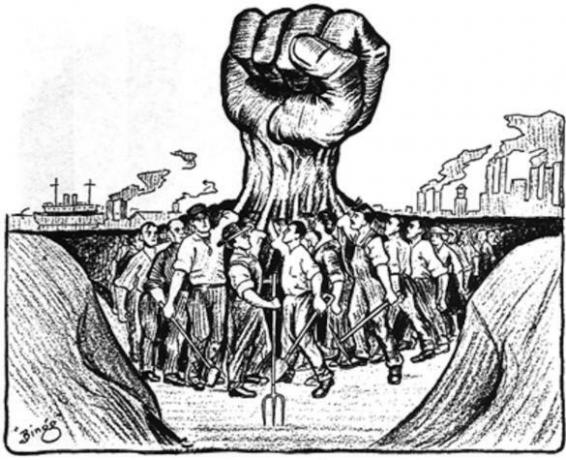
The group, the closest context of the individual in an organization, sifts the information that he receives, influences his behavior and provides him with a good part of the motivations for his behavior. The individual is part of one or more groups within the organization and in them develops their tasks, fulfills their obligations, performs their different roles and establishes relationships with others members.
Power is important in organizations and its distribution influences the performance and behavior of its members. The pattern by which power and decision-making capacity is distributed within an organization may be called the structure of power, being able to distinguish 2 extreme types of this structure based on the members who make the decisions united by a gradual continuum middle: centralized power structure, all decisions are made by one person or small group of people at the top of the hierarchy organizational; dominated structures"are the most centralized, in which power and control are in the hands of a few, although the reaction of subordinates may be different depending on the case:
- inert power structure, in which subordinates do not want to have greater power of decision or control
- elitist power structure, in which subordinates cannot get more power even if they claim it
- decentralized structure, decisions about different organizational problems are made by members distributed laterally and vertically at different levels of the organizational hierarchy.
In decentralized power structures, 2 types can be distinguished:
- fractional power structure, those in which power is divided into groups or fractions that sometimes conflict
- pluralistic decentralized structure, those in which power is dispersed among the members of the organization vertically and horizontally.
The centralization of an organization is an important dimension of its power, control and decision-making structure.
Pugh, Hickson, Hinnings and Turner (1968) define this dimension as the extent to which the locus of control for making decisions relevant to the organization is confined to the higher levels of the hierarchy. Technological complexity is negatively related to centralization, there is a negative relationship between the size of an organization and its possibilities of operation with a centralized structure, especially when the type of tasks is not routine and the employees are professionals.
Empirical research has established a series of general trends in determining the relationships between centralization and other structural dimensions of organizations. Centralization shows negative correlations with organizational complexity.
That is, the more complex and differentiated an organization is, the more difficult it is to maintain a centralized structure. Organizations composed of members who are not professionals, usually present a correlation between centralization and the establishment of norms and procedures (formalization and standardization).
When members are mostly professionals, even at the lowest levels of the organization, a distinction must be made between formalization of rules on the tasks to be carried out and the formalization of norms on the operation of the organization as a whole. The formalization of norms on the tasks to be carried out is positively related to centralization; while the formalization of norms on the functioning of the organization as a whole shows a negative relationship.
This article is merely informative, in Psychology-Online we do not have the power to make a diagnosis or recommend a treatment. We invite you to go to a psychologist to treat your particular case.

